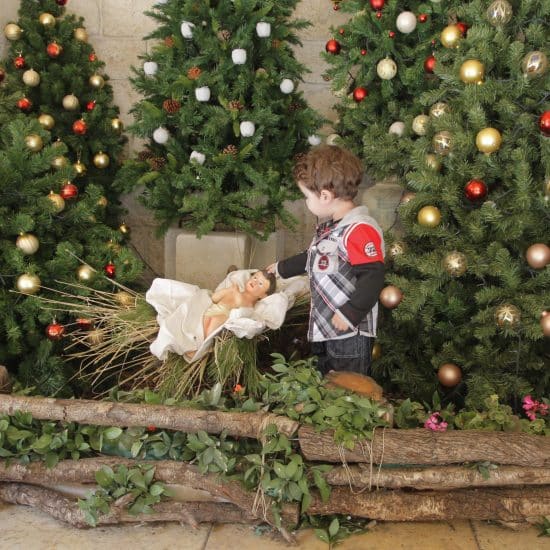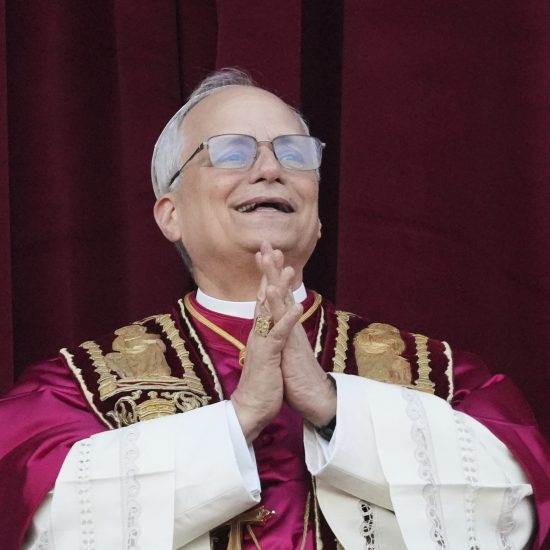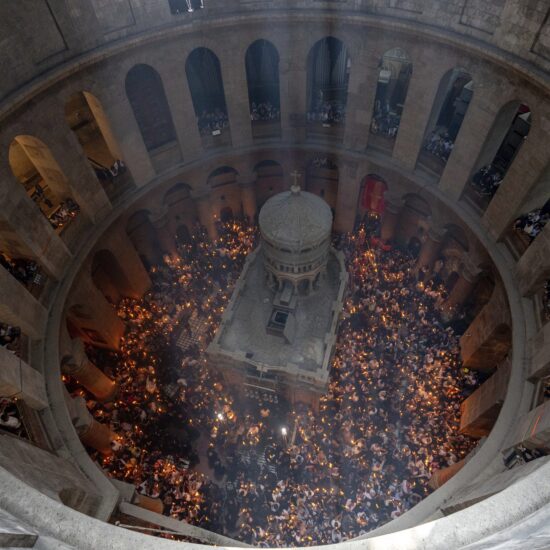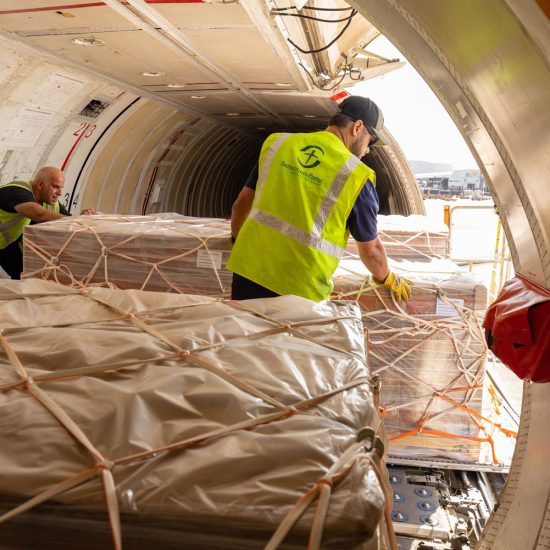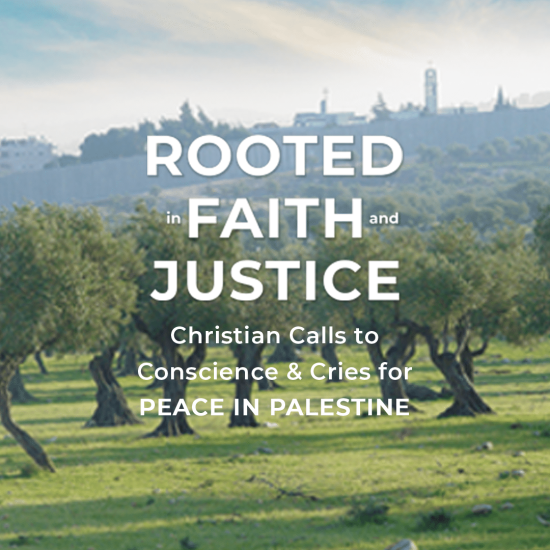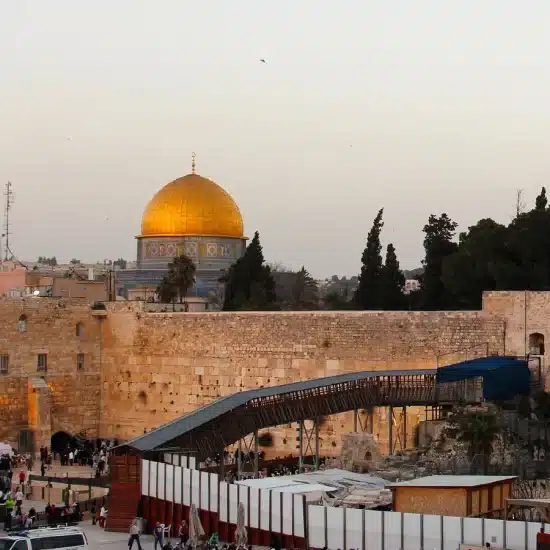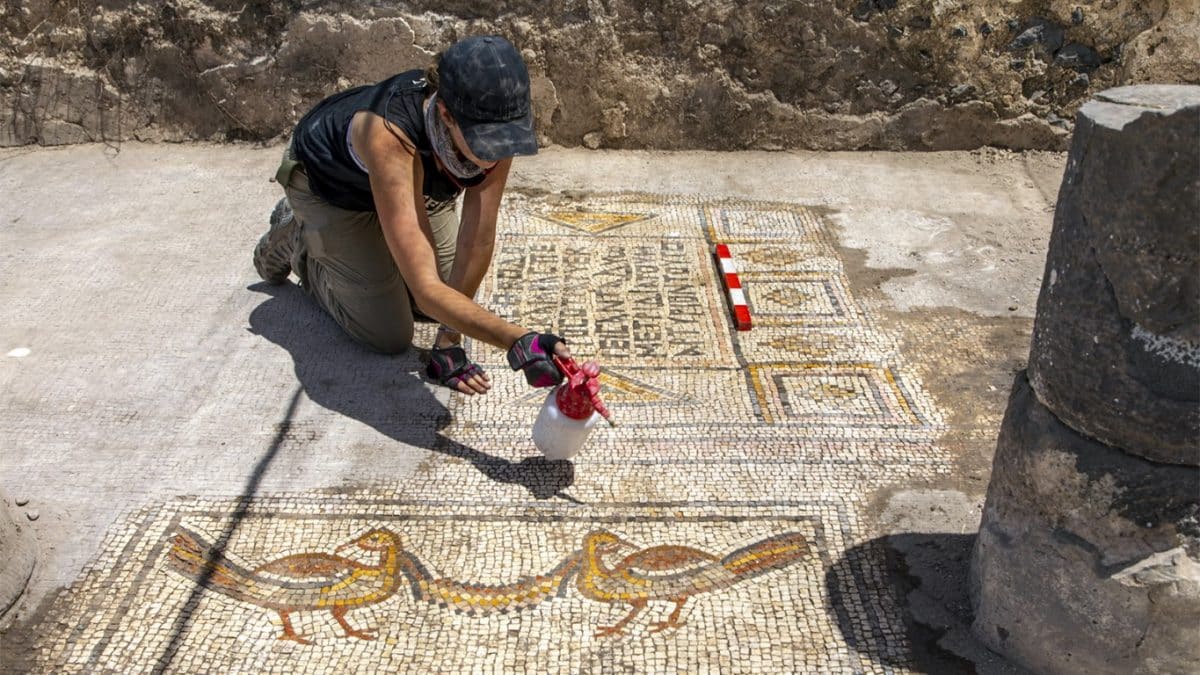
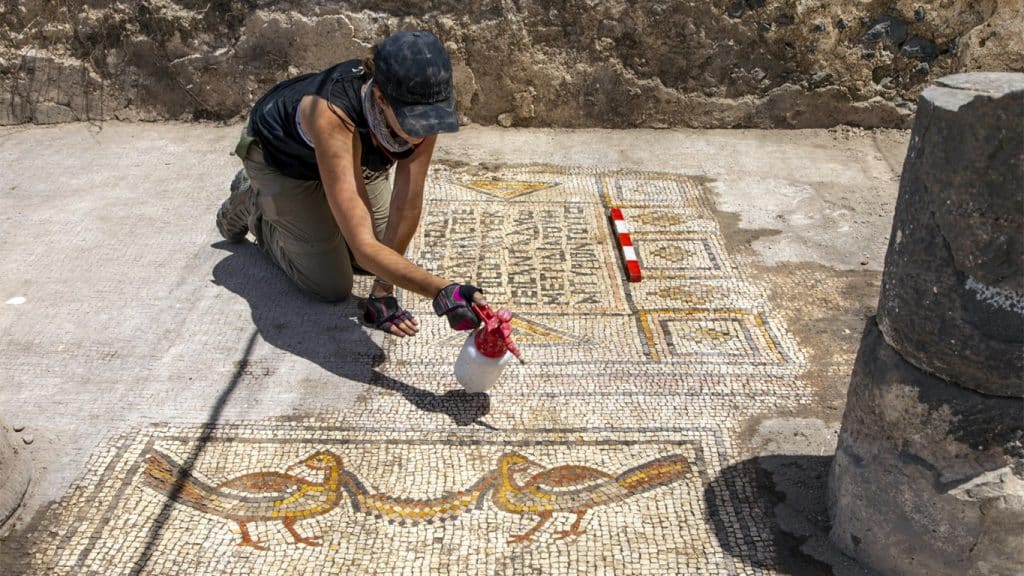
Jessica Rentz cleans a pair of birds holding a garland, foreground, and one of the dedication inscriptions in the mosaic, rear, in July 2019. Photo by Dr. Michael Eisenberg
JERUSALEM (RNS) — A fire that destroyed an ancient Holy Land church near the Sea of Galilee around 700 CE appears to have preserved the church’s beautiful mosaic floor, which includes depictions of baskets, loaves and fish as well as inscriptions.
The floor was protected by a layer of ash and the remains of the church’s collapsed roof.
According to the Gospel of John, it was at the Sea of Galilee that Jesus fed 5,000 people with five loaves and two fish, a miracle Christians call the Feeding of the Multitude.
The miracle is mentioned four times in the New Testament.
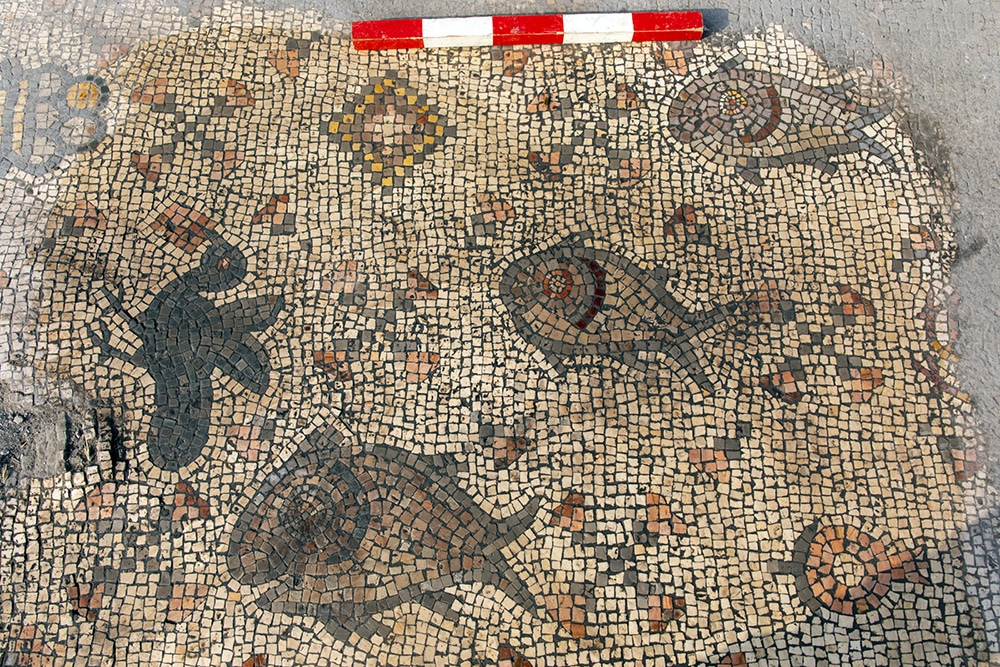
Three fish of different sizes make up the decorations of the mosaic floor. Photo by Dr. Michael Eisenberg
In 2005, University of Haifa archaeologists first discovered part of the so-called Burnt Church, built in the 5th century CE and located in the ancient city of Hippos in Northern Israel, but only began excavating it in earnest this summer.
Located 2 kilometers from the Sea of Galilee, Hippos — which affords a breathtaking view of the sea — was the central city of the region during Roman and Byzantine times.
“There can certainly be different explanations to the descriptions of loaves and fish in the mosaic, but you cannot ignore the similarity to the description in the New Testament: for example, from the fact that the New Testament has a description of five loaves in a basket or the two fish depicted in the apse, as we find in the mosaic,” said Michael Eisenberg, head of the excavation team in Hippos on behalf of Haifa University’s Institute of Archaeology.
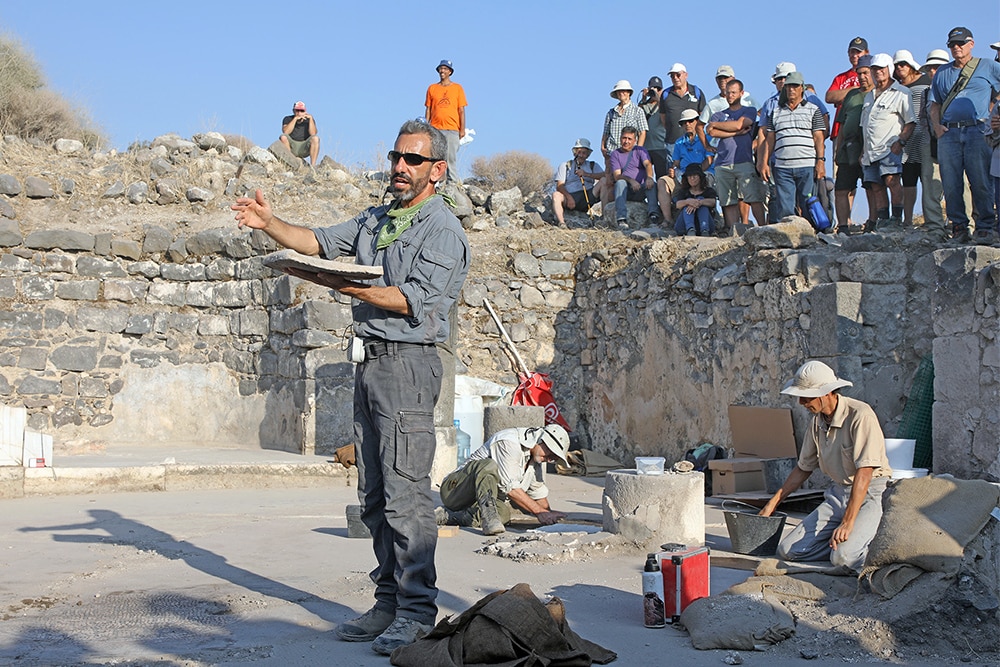
Dr. Michael Eisenberg presents one of the roof tiles which covered the floor during a tour of the church in July 2019. Photo by Arleta Kowalewska
Eisenberg told Religion News Service that the Burnt Church and its mosaic provide insights into the local Christian community of the time.
“The church itself is the legacy of the ministry of Jesus,” he said. “I think they had collective memories of the miracles.” Miracles, Eisenberg noted, which had taken place just hundreds of years before. “When they stood in the church and looked out, they recognized the places where the various miracles took place.”
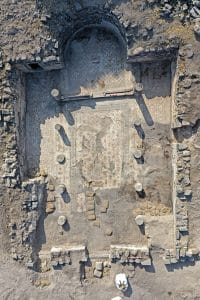
Aerial photo of the church at the end of the excavation season. Photo by Dr. Michael Eisenberg
That the mosaic is well-crafted but does not match the quality of some of the other mosaics discovered in the Holy Land also provides insight in the community, Eisenberg said.
Citing the mosaic’s relatively large pieces and the limited color palette used, “you can see that the community employed a local workshop,” he said. “We can imagine them sitting with the artisans and ordering the mosaic, saying we have this amount of money to spend on this amount of square meters. What can you do for us?”
Eisenberg said that at least seven churches “coexisted” around the Sea of Galilee during the Byzantine period.
“Perhaps we will find other churches,” or perhaps even the synagogue the archaeologists had been searching for when they found the Burnt Church.
“You need luck,” Eisenberg said. “A miracle.”
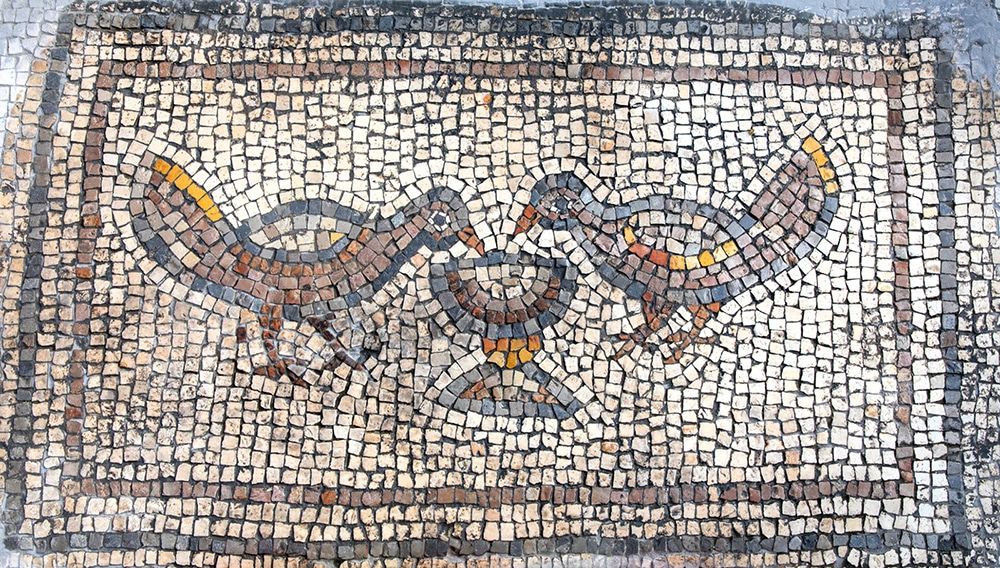
Mosaic of a pair of birds drinking from a goblet of wine. Photo by Dr. Michael Eisenberg

